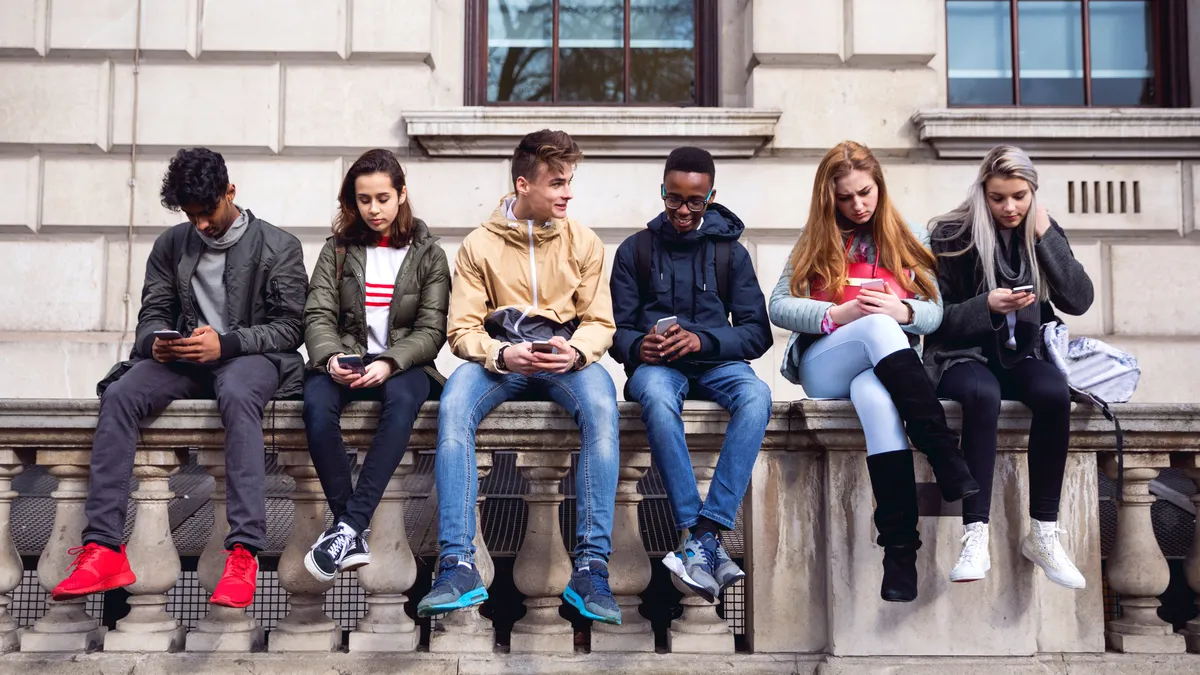While the pandemic’s effects weren’t felt as broadly as in recent years, retailers faced a new set of challenges this holiday season.
Holiday hiring for some companies was lower than in years past, including Macy’s, which announced plans to hire around 38,000 full- and part-time seasonal positions, down from 41,000 last year and 76,000 in 2021. On top of that, many companies have turned to layoffs during the busiest time of year as a way to cut costs, including Etsy, Saks and REI.
Economic uncertainty also loomed over consumers this holiday season. Higher prices on goods pressured consumers and caused many to pull back on discretionary purchases. To help spark a sense of joy during the season and encourage spending, many retailers leaned on nostalgia in their marketing campaigns — from Amazon’s “Joy Ride” ad, which was soundtracked by The Beatles’ “In my Life,” to Walmart’s “Mean Girls” reunion spot.
As the industry sets its sights on the year ahead, here’s a lookback at some of the biggest trends that shaped the holiday season in 2023.
Newer marketing techniques from brands
To lure in customers this year, many brands sought various marketing strategies with the help of newer tech. From virtual stores like J. Crew’s holiday-themed store to Kohl’s virtual holiday events, companies explored many options for shoppers to discover and visualize products. Just prior to the holiday season, TikTok Shop launched in the U.S., introducing the ability to purchase recommended products in the app. The social media platform even began to authenticate luxury handbags with the addition of a verification service announced in November.
For the holidays, Walmart announced its 23-part shoppable rom-com commercial series for TikTok, Roku, YouTube and social media channels. Over the span of weeks the retailer continuously rolled out episodes of the series “Add to Heart,” a pun on the add-to-cart feature, according to sister publication Marketing Dive. The entire series showcased 330 products.
After the pandemic, many marketing tactics have also taken on a hybrid format involving both online and in-person interactions. Pop-up shops and markets have continued on, notably from Shein at Forever 21’s Time Square store and DTC bedding brand Parachute's first holiday market event.
Inflation squeezed households for much of the year, but many consumers nevertheless kept spending
Inflation was already a worry for many U.S. households last year, which became a factor at the holidays. Throughout 2023, the squeeze of higher prices on essentials like groceries and gas continued, which showed up in earnings calls and the government’s monthly retail sales reports.
Many consumers shied away from making large purchases like electronics, appliances and furniture. Those categories saw tepid sales or declines, because they were coming down from pandemic-related peaks, and rising interest rates put some home sales out of reach.
The second half of the year saw prices ease. But uncertainty made earlier and deeper holiday promotions essential, so that customers could stretch their budgets.
By September, retail prospects seemed to dim. But the tactic of pushing early holiday deals seems to have paid off, according to GlobalData research. Black Friday — and November in general — was a surprise win for retail, even if deals remained in focus. The month’s lift was the best pace of growth since February, according to a research note from GlobalData Managing Director Neil Saunders.
The wariness and choosiness remains — 57.9% of consumers surveyed by GlobalData said they bought less on impulse this Black Friday compared to last year. But many were “very receptive to bargains and discounts,” to the point where 61.8% said they bought something on Black Friday that they’d put off earlier in the year.
“[C]onsumers pushed the override button on their financial challenges and went on a mini spending spree in November,” Saunders said.
Deals started slightly earlier, again
2022 featured plenty of holiday deals that started earlier than ever before, partly driven by an inventory rise throughout the year.
Though inventories somewhat improved this year, plenty of major retailers continued the new tradition of kicking off the holidays far before they began. Amazon began offering pre-Black Friday discounts on Nov. 17, just a few weeks after its second Prime sale that began Oct. 10 (one day earlier than last year’s event).
Walmart also sought to compete with Amazon’s additional Prime sales through its Holiday Kickoff deals from Oct. 10 to Oct. 12, starting a day earlier than its “Rollbacks and More” event in 2022. Target and Macy’s also took part in early deal events, both revealing sales for weeks leading up to the Thanksgiving weekend.
But did shoppers bite? The National Retail Federation’s data released in November following the Thanksgiving holiday weekend showed that 55% of customers took advantage of early holiday sales (down from 56% in 2022). Additionally, a Shopify-Gallup Holiday Shopping Pulse survey of 1,888 consumers from this month found 49% of U.S. shoppers said they planned to most of their holiday shopping in December.
Black Friday footfall soft, Cyber Week gains mobile sales share
The image of crowds massed at big box retailers’ or shopping mall doors, waiting in the dark and the cold for the best deals on big-ticket items like TVs and the year’s hottest toys has long been a Black Friday hallmark.
Data from retail analysts and experts found that more people opted to pick up their phone this year versus heading to stores to shop in person. Nevertheless, Black Friday is likely to remain one of the busiest and most important days for retail all year.
During day-of Black Friday store visits in the New York City metro area, Michael Brown, a partner and Americas Retail Leader at Kearney, told Retail Dive that while traffic was strong it wasn’t the “kick-the-doors-down traffic we used to have in years past.”
According to data from Adobe Analytics, mobile shopping overtook desktop this year. Online sales through mobile were high throughout Cyber Week — the five days from Thanksgiving through Cyber Monday – with smartphones representing nearly 52% of online sales. That’s up from nearly 50% in 2022. Thanksgiving also set a new record for mobile, with 59% of sales that day coming from a smartphone. According to Adobe Analytics increased use of mobile in retail sales likely indicates that “many consumers now find the experience on par with desktop shopping.”
However, Adobe Analytics data found that net-new demand, and not just higher prices helped drive consumer spending this season. E-commerce prices have fallen for over a year, down 6% year over year in October, according to Adobe’s Digital Price Index. Adobe’s price index tracks online prices across 18 product categories. Adobe’s numbers are not adjusted for inflation.
"The 2023 holiday shopping season began with a lot of uncertainty, as consumers shifted their spending to services, while dealing with rising costs across different facets of their lives,” Vivek Pandya, lead analyst at Adobe Digital Insights, said in a statement. “The record online spending across Cyber Week however, shows the impact that discounts can have on consumer demand, especially with quality products that drove a lot of impulse shopping.”




















